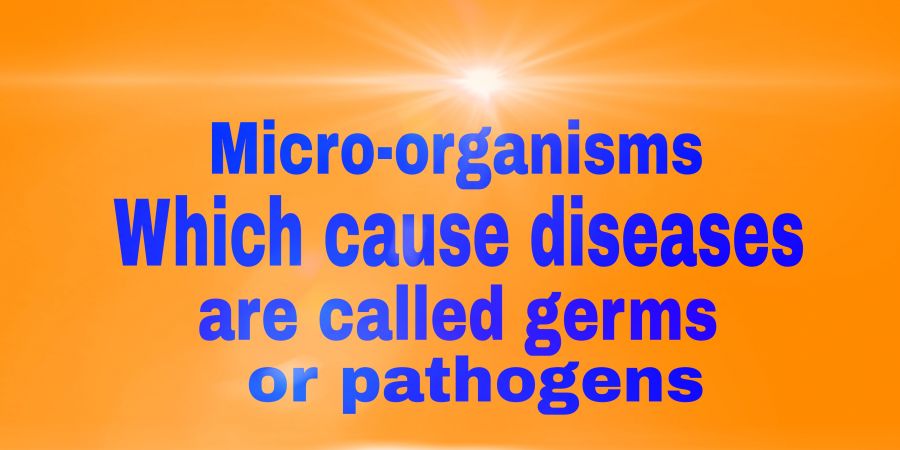

A disease is a condition in which certain important functions of the body get disturbed and make the person feel sick. Disease may be due to various external or internal factors. In previous chapter, you have read about deficiency diseases. These diseases are non-communicable as they do not spread from one person to another.
Certain diseases are caused by micro - organisms such as bacteria, virus, protozoan and fungi. Micro - organisms are extremely small living things that can be seen only with a microscope.
Not all micro - organisms cause diseases. Some are useful to us. Cheese and curd are made with the help of useful micro - organisms.
Some micro - organisms are harmful. They can cause diseases. Disease - causing micro - organisms are called germs or pathogens. They are of four kinds:
Bacteria are single called micro - organisms which may be round, rodlike or spiral in shape. They cause typhoid, cholera, tuberculosis, etc.
Viruses are much smaller than bacteria and can be seen only with election microscope. They are filterable. They become active only on entering a living body. Viruses cause flu, rabies, measles, small pox, etc.
Protozoa are much bigger than bacteria. They are single called animals. Amoebic dysentery and malaria are diseases caused by protozoa, amoeba and plasmodium respectively.
Fungi are very small non - green plants. They are larger than bacteria. Fungi causes ringworm.
Where Do Germs Live?
Germs live everywhere. They are present in air, in unclean water and in all kinds of dirt around us. They also live inside the body of animals and human beings.
You can become sick if germs enter your body
At times, germs enter the human body. If the germs are present in large numbers, the person is said to be infected. These germs do not allow the body to function properly and the person becomes sick.
A particular disease is caused by a specific kind of germs. For example, typhoid is caused by a kind of bacteria which is different from that which causes cholera.
Every disease has difinite symptoms
Every disease - causing germ affects the body in a certain way. For example, if a person vomits and passes watery stools several times in a day, the person could be suffering from cholera. By studying the symptoms, doctors are able to identify the diseases.
Communicable Or Infectious Diseases
Some diseases can be passed on from a sick person to a healthy person. Such diseases are called infectious or communicable diseases. Some communicable or infectious diseases are cholera, typhoid, malaria, dengue, T. B and ringworm.
Common cold is a type of communicable discase which is caused by viruses.
Disease Germs Causes
*Cholera Bacteria Contaminated food or
water, contact with an
infected person
*Typhoid Bacteria Contaminated food or
water, contact with an
infected person
*Malaria Protozoan Mosquito bite
*T.B Bacteria Improper nutrition,
contact with an
infected person
*Ringworm Fungi Unclean body,
contact with an
infected person
Thank you


